
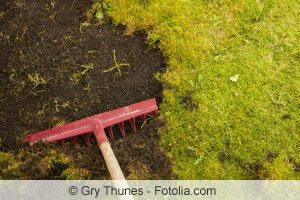
Table of contents
- Characteristics
- Causes of moss in the lawn
- problem areas in the garden
- Ferrous Sulfate Fertilizer
- safety instructions
- Very heavy moss infestation
- Application
- dosage
- Further measures
- Suitable soil conditions
- Basic rules against moss
- Conclusion
Anyone who has a lawn will be familiar with this problem: moss in the lawn. This lawn moss makes life difficult for millions of hobby gardeners. The reasons for the occurrence are the same for all of them: mistakes when laying out the lawn or in the care of the lawn. Sometimes both. Lawn requires soil that is well drained and not too firm, but which also has the ability to store water. If the conditions are unfavorable - especially with heavy, wet soil - there are optimal conditions for the growth of moss.
Characteristics
- scientific name: ferrous sulfate
- other names: ferrous sulphate, green salt, iron vitriol, sulphate of iron, green vitriol
- occurs in nature as a weathering product of fool's gold
- mostly technically manufactured
- often available in combination with fertilizer
Causes of moss in the lawn
Mosses are very old and extremely adaptable plants. Like ferns, they reproduce via spores. Once they are there, they spread rapidly and quickly displace the actual vegetation. Especially when it comes to rather low-growing plants such as lawns. Only the lawn is ever cut, while the moss, which grows much flatter, continues to grow undamaged. Usually it is a moss with the strange name: Sparriger Wrinkle Brother (Rhytidiadelphus squarrosus). If you have moss in your lawn, there is a reason. If you don't abolish these, the success - no matter what kind of moss destroyer - does not last long. Soil quality is often the culprit for excessive moss growth. Most common reasons:
- heavy, compacted soils that tend to become waterlogged
- nutrient deficiency
- insufficient soil preparation before sowing
- unsuitable seed mixtures
- incorrect mowing (irregular or too short a cut)
- pH value in the soil too low (optimal: 5-7)
- inadequate or incorrect care
problem areas in the garden
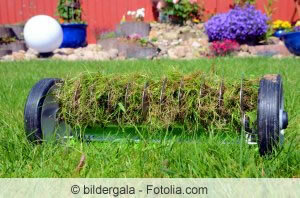
Grass grows best in sunny places on humus-rich, well-drained soil. Even if some lawn mixtures are advertised as so-called shadow lawns, a gardener has to but go to disproportionate expense when sowing lawns in places that have almost no sun see. Normally, a lot of moss will grow in dark places.
Ferrous Sulfate Fertilizer
There are commercially available preparations such as iron sulfate, which not only destroy the moss, but also help the lawn look lush and green and grow well. Ferrous sulphate can be used as a salt alone or better yet in combination with a lawn fertilizer to help strengthen the lawn at the same time. The moss does not tolerate iron sulfate, dies and dries up. An iron deficiency in the lawn can be recognized by the yellowing of the stalks and the sudden and proliferation of moss.
Danger:
The ferrous sulphate can cause brown stains on slabs, stones and many other materials!
safety instructions
The iron salt is freely available. It is not to be found on the locked plant protection shelf, but is usually in the lawn department in the garden center. While not toxic in concentrated form, it can irritate skin and eyes:
- Harmful if swallowed
- causes skin irritation
- causes severe eye irritation
Therefore, safety goggles and chemical-resistant gloves should be worn when working with iron sulphate fertilizer.
Very heavy moss infestation
If there is an excessive amount of moss in the lawn (over 20%), the majority of the moss should first be removed mechanically before the moss killer is used.
Application
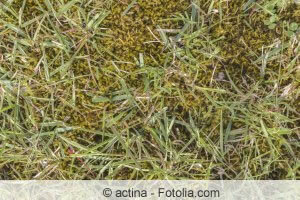
Ideally, the lawn area should be treated with iron fertilizer in the spring, then the lawn has the opportunity to grow throughout the summer. However, the ground must not be frozen under any circumstances. It is advisable to mow the lawn a few days before treatment so that the iron sulphate fertilizer can reach the soil well. It is best to dissolve the salt in water before use.
- Time: March/April (when the weather is wet)
- Apply evenly with a watering can (spray attachment).
- if solid salt is spread: then water lightly
- Do not step on the lawn for a few days (also keep pets away)
The effect can already be seen after 5-7 days: the moss dies, turns yellow and then brown, and in some cases black. All dead plants must now be removed from the lawn by hand or with a rake. If the lawn is heavily covered with moss, the treatment can be repeated in August/September.
dosage
A maximum of 25 g of iron sulphate fertilizer per square meter is applied to the lawn. This amount must not be exceeded under any circumstances.
- Dissolve 250 g of iron sulphate in 10 l of water
- it is best to start immediately in a 10 liter watering can
- lukewarm water improves solubility
- Distribute the 10 liters of solution evenly over 10 square meters of lawn
Further measures
As a rule, applying iron sulphate fertilizer is not enough. A few other measures help to permanently attack the moss. The aim here is to create ideal growth conditions for the lawn. If the lawn grows nice and dense, the moss has little space and sunlight to spread. Ideally, no further treatment is necessary after a while.
- scarify (cut the grass a little shorter than usual beforehand)
- sow new grass in the gaps (only use good quality seeds)
- Check and possibly improve soil conditions
- Proper lawn care
Suitable soil conditions
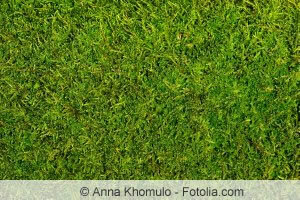
In some cases, getting a soil analysis is a really good investment. After sending in soil samples, many institutes not only provide information about the nutrient content in the soil, but also recommendations for fertilization. You will often also get a classification of your soil (heavy, humic, sandy...) and the pH. This makes it easier to assess what the lawn is missing and avoids buying unnecessarily expensive fertilizer, which ultimately only makes everything worse.
Tip:
You can already get a set for the soil analysis from specialist retailers. All you have to do is take the soil samples and send them in. The price for the analysis is already included when purchasing the set. Depending on the scope of the analysis, prices start at around 20 euros.
Basic rules against moss
First of all, of course, the cause of the moss in the lawn must be found out. If the problem is in the ground, the following measures can be helpful:
- water shady places as often as sunny ones
- loosen the soil frequently in shady places (effective against waterlogging)
- mix loamy soil with sand when scarifying
- Check the pH of the soil (should be between 5 and 7), raise or lower if necessary
- scarify regularly (loosens the soil and creates positive conditions for the lawn)
- mow the lawn less in shady places (10-12 cm remaining length)
- mow regularly: once a week, no shorter than 5-7 cm remaining length
- Fertilize twice a year with slow-release fertilizer for lawns
Conclusion
Iron sulphate fertilizer is a helpful remedy against moss in the lawn. Applied to the lawn, it acts quickly and effectively against moss and strengthens the lawn. However, if you want to do something against the moss in the long term, you should also fertilize the lawn regularly, aerate it, mow it carefully and regularly and water it. This is the only way the measures will be successful in the long term.
 garden editorial
garden editorial I write about everything that interests me in my garden.
Learn more about lawn care
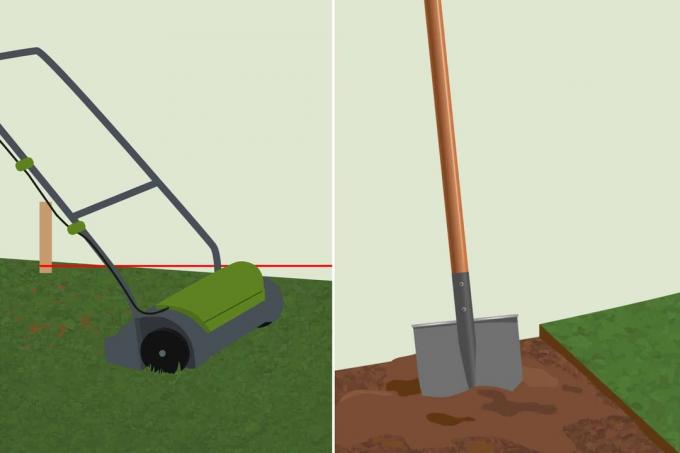
Leveling out unevenness in the lawn: this is how it works
Unevenness in the lawn is annoying and poses a danger to gardeners, playing children and pets. There are a number of methods that can be used to level the lawn. We present them to you in our guide.

Leveling the lawn: how to smooth uneven surfaces
Dents and holes in the lawn are unsightly. We will show you step by step how to smooth uneven areas in the lawn again.

Algae in the garden | Lawn is slippery: what to do?
Algae love rainy days. Can the water seep badly into the ground, even better! The green, slippery mass is not only not a pretty sight, but also a danger for the lawn. Only those who act preventively and correctly in acute cases can avoid permanent damage.

Fighting fungi in the lawn | 10 tips against fungal infestation
Mushrooms in the lawn are not uncommon but annoying and sometimes even dangerous. This is especially true if the garden or green space is also used by pets and children. Here we will show you how to combat fungal infestation.

Aerate the lawn | Before or after mowing?
Sun, water, fertilizer and air are necessary for the lawn to grow. If the lawn does not get enough air, it cannot grow properly. We clarify when the right time to ventilate the lawn is.

Mulching with lawn clippings: 13 things to consider
Keeping the lawn short is a must for many hobby gardeners. However, if the lawn mower does not have a mulching function so that the grass clippings can remain on the lawn, the question arises as to where to put the waste. Because the compost heap is not a good solution here.
